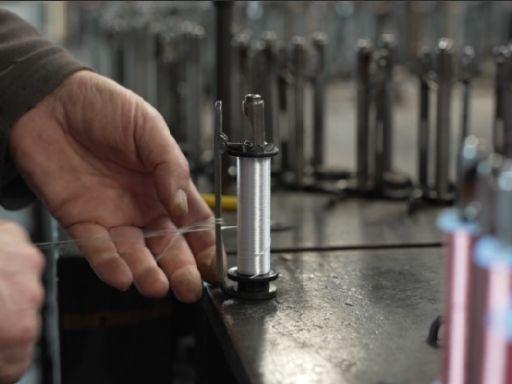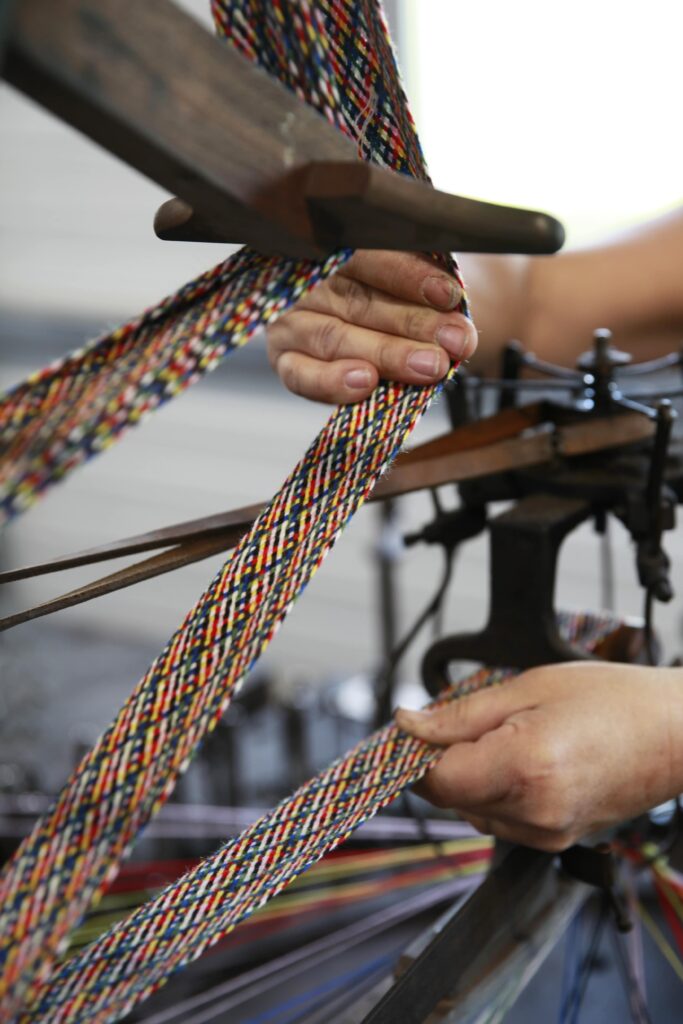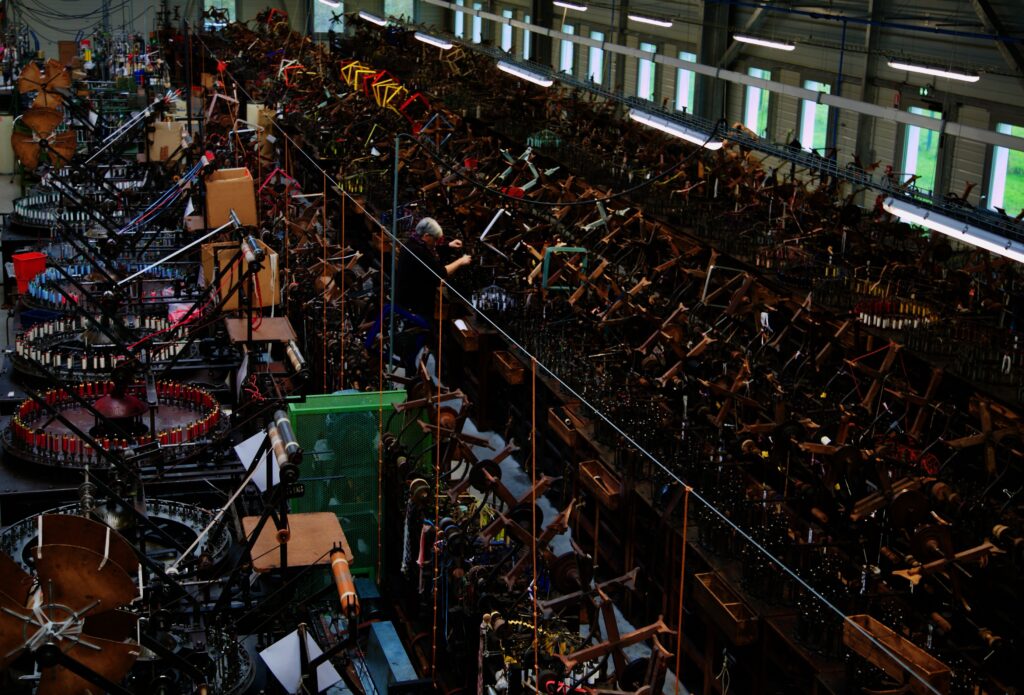


Braiding on wooden looms
With a fleet of 1.107 wooden braiding machines, Société Choletaise de Fabrication has the largest slow-revolution braiding fleet in operation today.
Thanks to their exceptional know-how, our braiders have mastered the fine-tuning of the machines while conducting research to develop new products on these ancient looms, which date back nearly two centuries.
History of SCF’s wooden braiding machines
In December 2013, Société Choletaise de Fabrication acquired 1.107 wooden braiding looms, making this fleet of traditional slow-revolution looms the largest in the world still in operation.
These industrial production looms enable the manufacture of rare and exceptional products that no modern loom can produce.
More than a production tool, it is above all the safeguarding of a French industrial heritage and its manufacturing techniques: the oldest looms date back to 1830.
Originally from St Chamond in the Haute-Loire, these looms have been preserved and maintained with passion by François Camus and his son Guy Camus. The original factory dates back to 1833 and has now been transformed into a museum under the name of “Maison des Braides et Lacets“.
Several times a year, Guy Camus, the braiding craftsman, passes on his knowledge, restores looms, discovers new combinations and creates new products with the SCF braiders.
Production
The combination of slow braiding and delicate, finely titled materials enables the manufacture of top-of-the-range, rare and highly refined products that only wood looms can produce.
SCF has 450 classic wooden looms and 650 special looms capable of creating forgotten products. Divided into 130 groups of looms, the vast majority have never been duplicated in fast looms.
With a production rate of around 5 metres per hour, SCF has a large number of identical looms to guarantee its customers short lead times and production capacity on both a large scale and on a sample basis.
SCF also owns some unique looms, probably the last in the world, for rare products such as the double cord and the Milanese braid. The 97-spindle Milanese loom is a wide (40 mm) flat braid in viscose or wool used to make ties or trim fashion dresses until the 1950s. The so-called Milanese loom braids by passing its spindles 3 by 3, forming a thick, high-quality stitch, making this a singular loom.
Thousands of braided products
Each loom has its own product.
Each slow-revolution braiding machine makes a particular range of products : cordons, cords, serpentines, soutaches, flat braids, tubular braids, rat’s tails, picots, cleats, strands, piping, princesses, elastics, piped braids, etc.
We also make laces on classic wooden looms, as we did in 1900; laces for which we use a fine thread count for an exceptional finish. These laces are braided at a speed of 5 metres per hour, preserving the qualities of the cotton fibre. Then glazed with paraffin, the laces take on the appearance of leather. The combination of slow braiding and glazing makes these laces particularly strong, resistant to breakage and abrasion (rubbing of the lace in the shoe eyelet). For a perfect finish, SCF offers tone-on-tone lace ends: black, dark brown, copper, etc.
Braided products are made using fine yarns and noble materials such as viscose, silk and shiny polyester, but also organic cotton, linen, wool and cellulose acetate.
Slow braiding can be used to create a wide variety of braids and laces, both in terms of patterns and the width or diameter of the product, offering exceptionally fine grain.
To find out more about the techniques used to assemble products braided on wooden looms, visit the Atelier de Tressage website on the page dedicated to products made on wooden looms.
